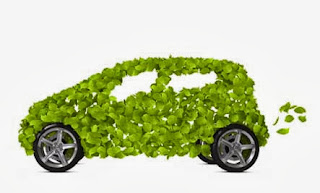Green Car Programmes: Imminent Disasters?
The eco-car programme in Thailand drastically changed the car market in the Kingdom. Following that, the Low Cost Green Car (LCGC) p...
https://automology.blogspot.com/2013/10/green-car-programmes-imminent-disasters.html
The eco-car programme in Thailand
drastically changed the car market in the Kingdom. Following that, the Low Cost Green Car (LCGC) project was recently approved in Indonesia.
So,
what defines a low cost green car? The vehicle’s engine has to be less
than 1200cc and with a very minimal achievement of 20 to 22 kilometres
per litre of fuel consumption. Toyota Agya and Daihatsu Agya are the
first two models under the LCGC project. In Thailand, Nissan was the first to respond
with the Nissan March in 2010.
Both
Thailand and Indonesia have been eyeing to become the production hub
for eco friendly vehicles. These two countries are already the largest car production
hub in the ASEAN region, in terms of production rate and domestic
sales, with Indonesia behind Thailand despite of the former’s large
population of 240 million compared to latter’s 60 million. Thailand
contributed 1.3 million cars sold and Indonesia 1.1 million cars sold in
the year 2012, which has helped the total car sales in ASEAN reach 3
million units.
Some
welcome the Indonesian LCGC project due to the benefits of low cost and green
concept vehicles, while there are also oppositions to this project. If
the government’s policy increases the number of vehicles on the road
aggressively, then the infrastructure should be expanded simultaneously.
The already crowded roads are at a risk of being further burdened.
|
There are also those who believe that the Indonesian government should improve the public transport system instead of making it easier to acquire a car, since the current traffic conditions in big cities are already intolerable. The journey from West Jakarta to Bandung is 159.9 kilometres - at a normal speed of driving, Google Map calculates that it should take 2 hours and 6 minutes to reach the destination. The reality is that most of the time it takes more than 4 hours to complete the journey. If this is the situation before the LCGC project, what will happen when there are more affordable cars available leading to more passenger vehicles on the road, with the same old infrastructure and continued lack of reliable public transport? In Thailand, there is already growing concerns that there is an oversupply of cars in the domestic market and automakers are looking for foreign markets to export excess supply to. The first time buyer incentives had contributed greatly to the situation. Yet, Phase 2 of the eco car programme is about to begin, enticing more automakers to make more cheap cars.
As
with many policies, the LCGC and eco car programme seemed to have taken a ‘leap
first, think later’ approach. Now that disaster is imminent, will they
be able to act speedily to avoid it?
|










